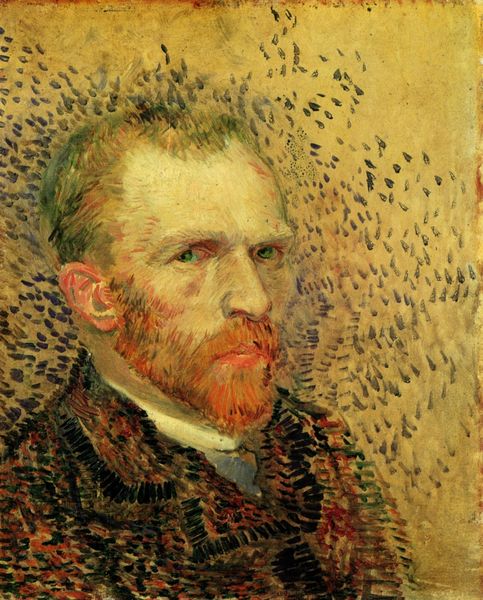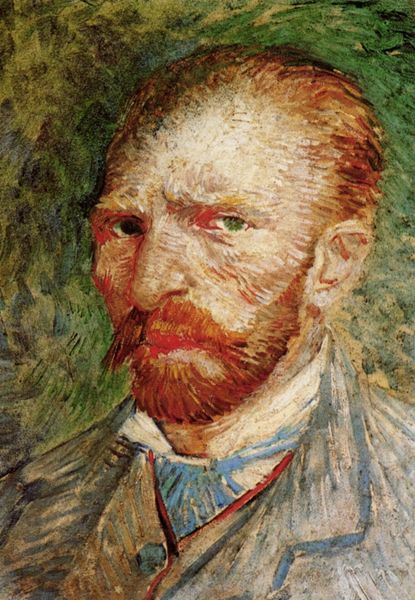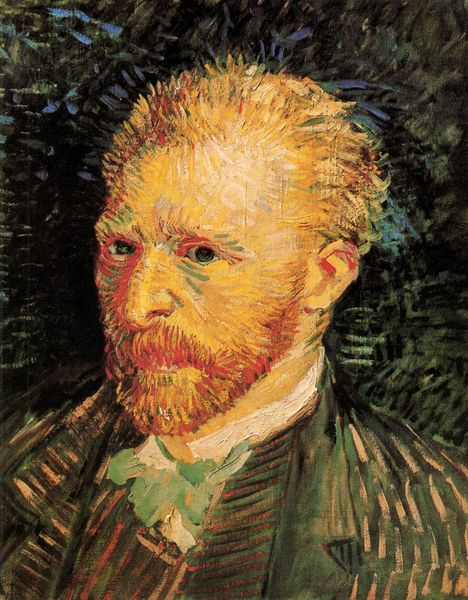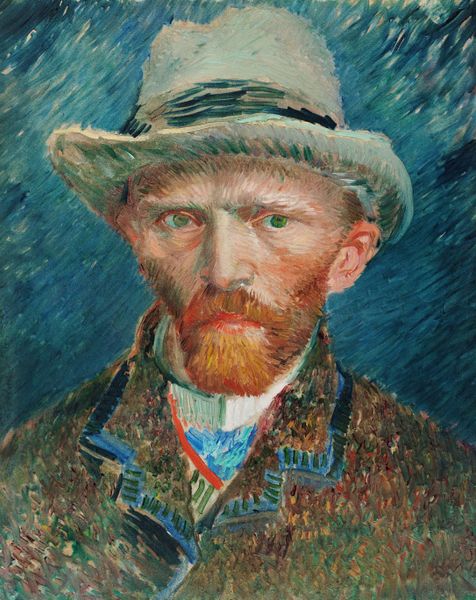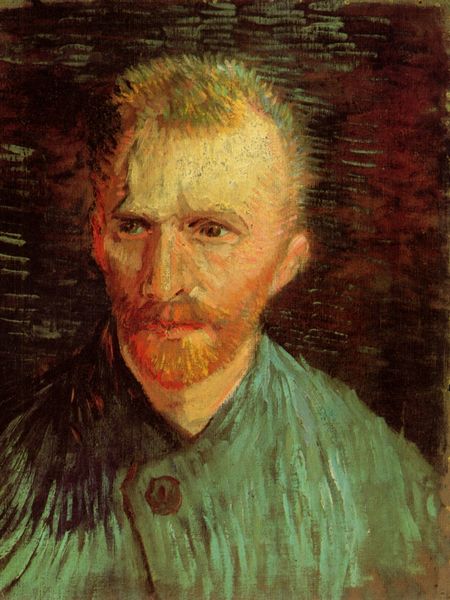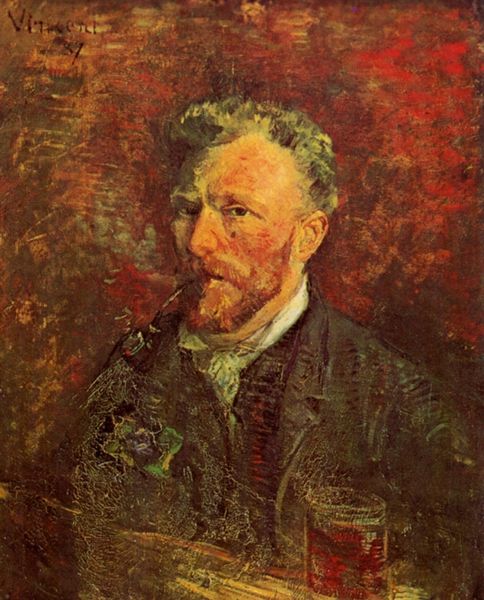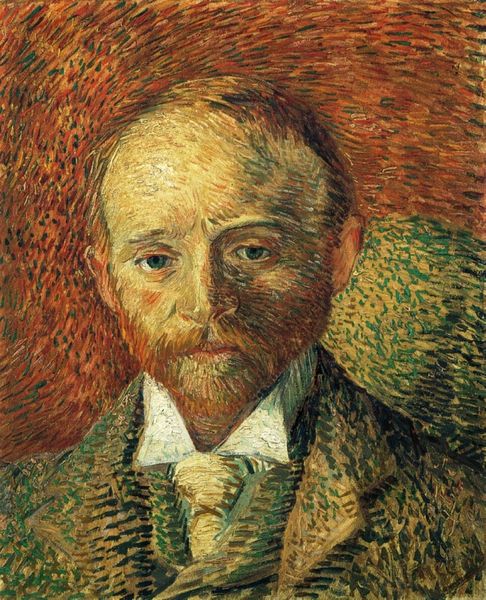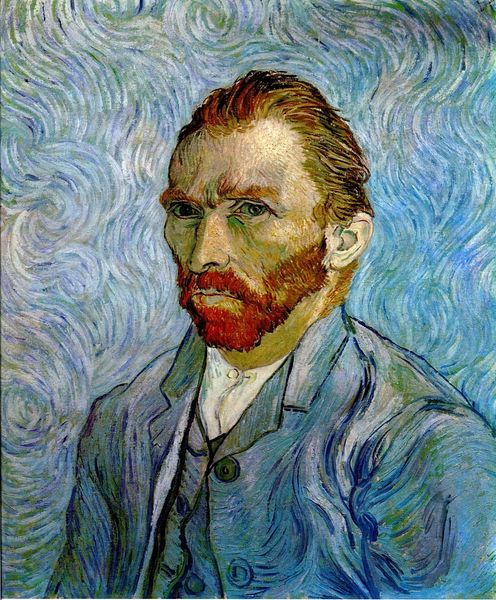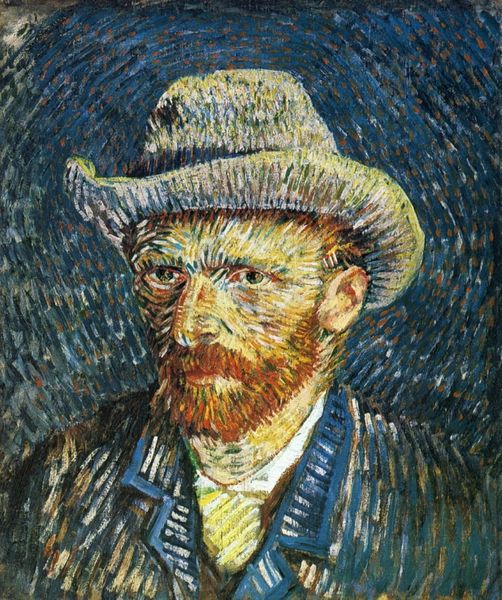
painting, oil-paint, impasto
#
portrait
#
self-portrait
#
painting
#
oil-paint
#
impasto
#
post-impressionism
#
modernism
#
realism
Copyright: Public domain
Vincent van Gogh’s self-portrait at the Art Institute of Chicago presents a man rendered in thick strokes of oil paint, a technique that animates the surface with an almost palpable energy. The composition is dominated by the artist's face, framed by a halo of fiery hair and beard, against a swirling, textured background. Color plays a crucial role here. The vibrant reds and yellows of Van Gogh's face and hair contrast sharply with the cooler blues and greens behind him, creating a visual tension that destabilizes traditional portraiture. The brushstrokes themselves are not merely representational; they are expressive marks that convey a sense of the artist's inner turmoil and intensity. Van Gogh’s radical brushwork challenges the viewer to engage with the painting not just as a likeness but as a dynamic field of color and texture. The painting transcends mere representation, becoming instead an embodiment of the artist's subjective experience and a precursor to the abstract explorations of later modernists. It reminds us that art is not a static object but a site of constant negotiation between the artist, the artwork, and the viewer.
Comments
No comments
Be the first to comment and join the conversation on the ultimate creative platform.


